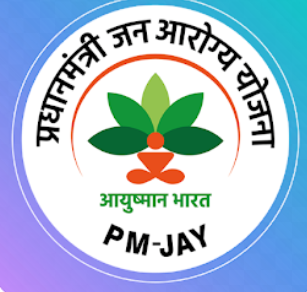Aayushman Bharat
Ayushman Bharat is a flagship scheme of the Government of India that aims to provide free access to healthcare for low income earners in the country. The scheme was launched on 23 September 2018 by Prime Minister Narendra Modi, with the goal of providing coverage of up to ₹5 lakh (US$6,300) per family per year for secondary and tertiary care hospitalization to over 10.74 crore (107.4 million) vulnerable entitled families (approximately 50 crore beneficiaries).
Background
India has a population of over 1.3 billion people, with a significant portion living below the poverty line. According to a report by the National Health Authority, around 6% of the population in India is pushed below the poverty line every year due to healthcare expenses. Additionally, out-of-pocket expenditure in India is over 60%, which is among the highest in the world. Ayushman Bharat was launched to address these challenges and provide financial protection to vulnerable families.
Components
Ayushman Bharat has two interrelated components:
Health and Wellness Centres (HWCs)
Under this component, 1.5 lakh existing sub-centres and primary health centres will be transformed into Health and Wellness Centres by 2022. These centres will provide comprehensive primary healthcare, including for non-communicable diseases and maternal and child health services. They will also provide free essential drugs and diagnostic services. As of June 2021, over 75,000 HWCs have been operationalized across the country.
Pradhan Mantri Jan Arogya Yojana (PM-JAY)
PM-JAY is the second component under Ayushman Bharat. It provides health insurance coverage of up to ₹5 lakh per family per year for secondary and tertiary care hospitalization. The scheme covers 1,393 procedures under various specialties, including cardiology, oncology, neurosurgery, and pediatrics. As of April 2023, over 3.65 crore hospital admissions have been covered under the scheme, with an expenditure of over ₹45,000 crore.
Implementation
Ayushman Bharat is being implemented by the National Health Authority (NHA) at the national level, while state health agencies are implementing it at the state level. The scheme is being funded by both the central and state governments in a 60:40 ratio for most states, and 90:10 for the northeastern states and the three Himalayan states of Jammu and Kashmir, Himachal Pradesh, and Uttarakhand.
The scheme uses a paperless and cashless system for beneficiary identification and transaction management. Beneficiaries are identified using the Socio-Economic Caste Census (SECC) 2011 database, and are provided with a unique Ayushman Bharat ID card. Hospitals empanelled under the scheme use this card to verify beneficiary eligibility and process claims electronically.
Impact
Ayushman Bharat has had a significant impact on India’s healthcare system. According to a report by the NHA, the scheme has helped in reducing out-of-pocket expenditure for beneficiaries by over 50%. It has also led to an increase in the utilization of healthcare services, particularly among the poor and vulnerable sections of society.
The scheme has also had a positive impact on the healthcare infrastructure in the country. Many private hospitals have been empanelled under the scheme, leading to an increase in the availability of quality healthcare services in rural and underserved areas.
Challenges
Despite its successes, Ayushman Bharat faces several challenges. One of the main challenges is the lack of awareness among beneficiaries about the scheme and its benefits. According to a survey by the NHA, only around 50% of eligible beneficiaries were aware of the scheme.
Another challenge is the limited capacity of the healthcare infrastructure in the country. While the scheme has led to an increase in the utilization of healthcare services, many hospitals and clinics are struggling to cope with the increased demand. This has led to long waiting times and a shortage of beds in some areas.
There are also concerns about the financial sustainability of the scheme in the long run. With the increasing cost of healthcare and the growing population, there are fears that the scheme may become too expensive for the government to sustain.


